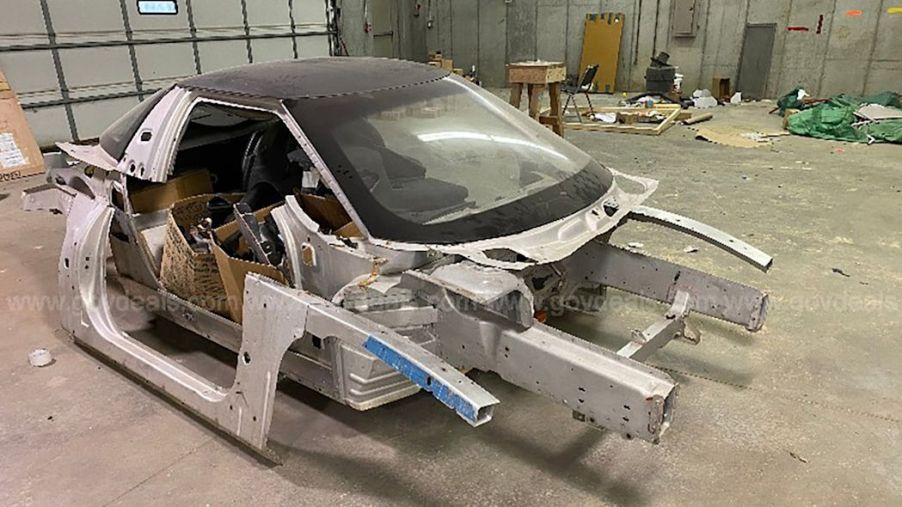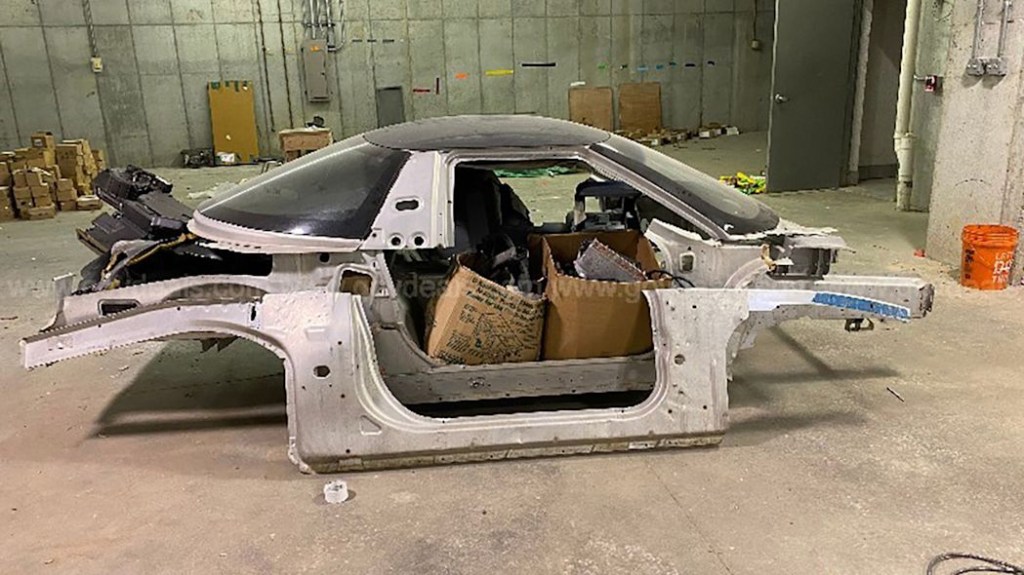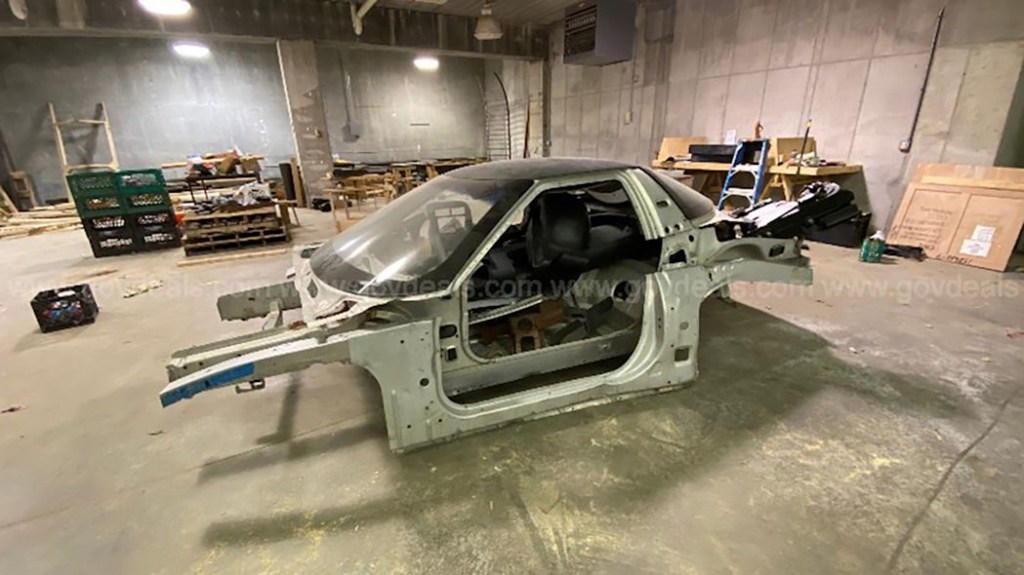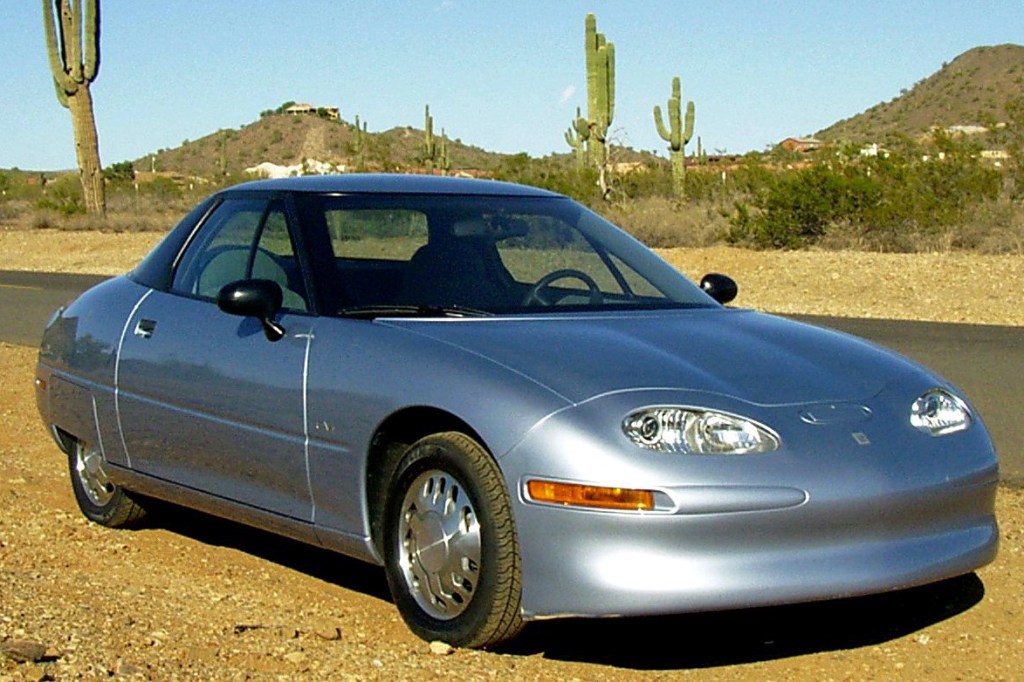
How Can This Scrap GM EV-1 Shell Be Worth $23,662?
What were the chances this pile of scrap could have easily wound up at the recycler? Instead, someone was smart enough to figure that there are fans of the first modern EV. And just like collectors of vintage Apple computers, any ancient electronics have a big following. So it shouldn’t come as a surprise that these remnants of a GM EV-1 sold recently for $23,662. That’s factoring in the auctioneer’s tab, too. If you’re not familiar with the EV-1 you can brush up on it HERE.
How can this EV-1 shell be worth $23,662?

What makes this so expensive to some is that with GM saving only a handful of EV-1s while destroying the mostly 1,100 of them made it instantly valuable. Museums and some colleges got a few, less drivetrains. Some technical schools got parts of EV-1s to tinker with. But how many could that be–maybe two dozen? Suffice it to say there aren’t many around. Supply and demand says any EV-1 in the wild is incredibly valuable.
But with no parts around, how can this pile of nothing be worth anything? Ah, there is a place where EV-1 pieces land on a semi-regular basis. This place is called the Beata Electric Motor Carriage Collection. It has amassed a gang of one-off, hyper limited-edition, and prototype electric vehicles of all stripes from the last 25 or so years. The Colorado museum of sorts currently has 12 different BEV and ZEV examples.
Beata is a repository of sorts for everything GM EV-1

One of their projects is the accumulation of EV-1 parts for their own use. They also are a repository for sourcing and trading for pieces to finish their own EV-1. As of right now, it is about 80% complete. A miracle in some ways for there to be that many pieces floating around to then come together. So it was Beata that paid the price for the remnants of this particular EV-1.
This shell ended up at the University of Cincinnati in 2008. Since then it has been tucked away. Really, there are few uses it could serve. But as a source of revenue for the university, it has served a great purpose. Now it may wind its way to becoming a whole car under the aegis of Beata.
Beatta has more than just an EV-1

Other projects in the works include a 2000 Toyota RXT-G prototype, a 1997 RAV4 coupe EV prototype, the 1995 AC Propulsion eCivic EV, two 1995 ACP RXT-G prototype LongRangers number 1 and number 2, and the EV-1.
The EV-1 project has gotten components from over 50 other EV-1 cars to make up the 80% it has managed to comprise. In some ways, it is the Holy Grail of EVs, although many of the collection’s prototypes could also be considered the same. The difference is that this was the first mass-produced EV in the modern age. Yet, there are none in the wild.
There is only one intact GM EV-1 in existence

Only one intact EV-1 is left and it resides with the Smithsonian Institute. The only reason they got a complete one is that they refused to take an incomplete EV-1. Other institutions didn’t have quite the clout of the Smithsonian.
So, you know there are collections of everything and so it would figure that there is a collection of the first experiments into electrification of the automobile in modern times. There is even a movie about the EV-1. You can visit the Beata website and see what they have and where they are at with their own EV-1. As it stands now it is hard to say what will happen to its latest addition. But, if any existing EV-1 pieces still exist this is the best place for them to end up.



